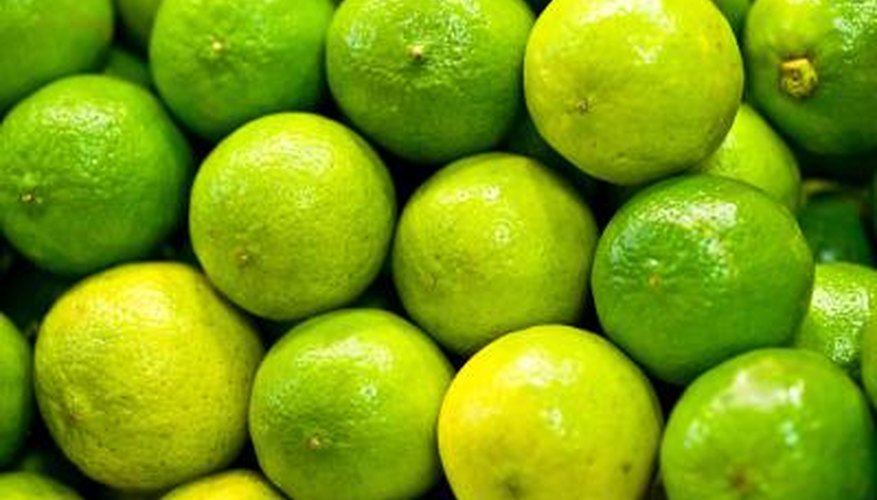The lime tree is part of the citrus family. Considered a subtropical tree, limes grow in warmer areas of the world where temperatures seldom drop below freezing. The life cycle of the lime tree begins with a single seed.
Germination and Growth
Lime seeds are oval, light tan in colour and between five and six mm in diameter. The seed contains the genetic material in an embryo that, when conditions are right, will germinate and begin to grow. Initially the lime seed, once sprouted, uses the stored starches within the seed to grow. Later the seedling forms a root system that begins to draw water and nutrients from the soil. Leaves form and the seedling carries on photosynthesis to produce energy that allows the plant to continue to grow.
- Lime seeds are oval, light tan in colour and between five and six mm in diameter.
- The seed contains the genetic material in an embryo that, when conditions are right, will germinate and begin to grow.
Maturity
After three to five years, the lime tree reaches maturity. Lime trees are typically small plants, seldom reaching over 20 feet tall with a relatively compact canopy and rounded form. Once mature, the tree then flowers to reproduce, which is the mark of an angiosperm.
Reproduction
To reproduce, lime trees grow clusters of small, white, waxy flowers that are very fragrant. Each flower contains both the male and female organs of the plant. The anther, the male part of the flower, produces a fine dust-like substance called pollen that contains sperm. The female part of the plant is called the pistil and consists of the stigma, style and ovary.
- To reproduce, lime trees grow clusters of small, white, waxy flowers that are very fragrant.
- Each flower contains both the male and female organs of the plant.
Pollination
The pollen produced by the anthers is transferred to the stigma, usually by an insect pollinator, such as a honey bee. Once the pollen contacts the stigma at the end of the pistil, the sperm enter the stigma, travel down the style and into the ovary where they fertilise the ovules inside.
Fertilisation
Once fertilised, the ovules grow into seeds. The ovary of the flower forms a seed pod. In the case of the lime tree, this is a slightly oval fruit with divided sections filled with tiny cells that contain a sour juice. These sections protect the seeds and are surrounded by a thin, shiny, green rind.
- Once fertilised, the ovules grow into seeds.
- These sections protect the seeds and are surrounded by a thin, shiny, green rind.
Dispersal
When the fruit ripens, it is either eaten by humans or animals that inadvertently drop the seeds on the ground, or the fruit simply falls to the ground and rots, releasing the seeds. Once in contact with the soil, the seeds germinate and sprout, repeating the life cycle.
